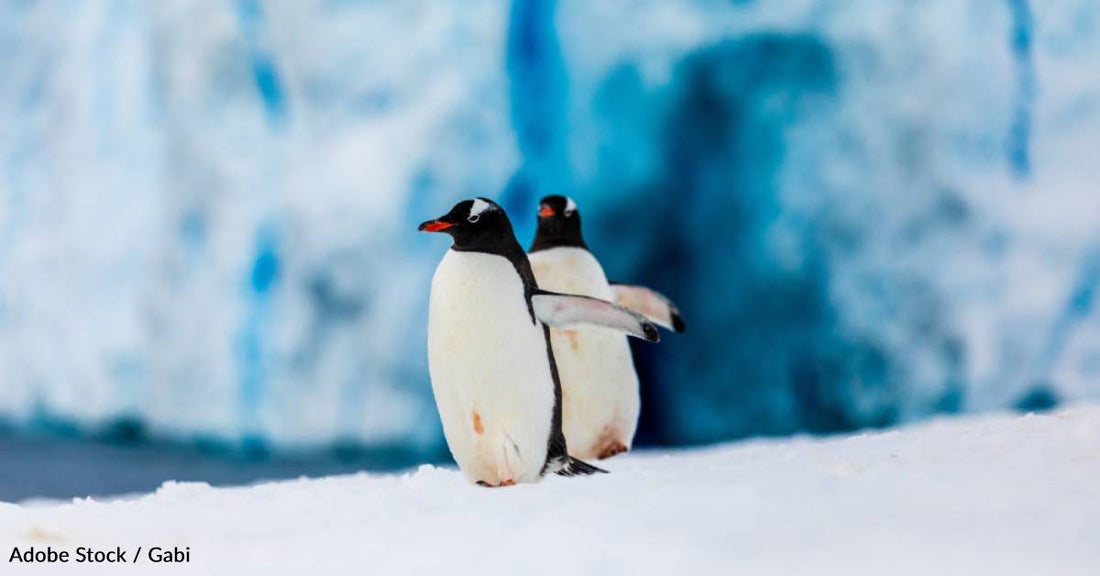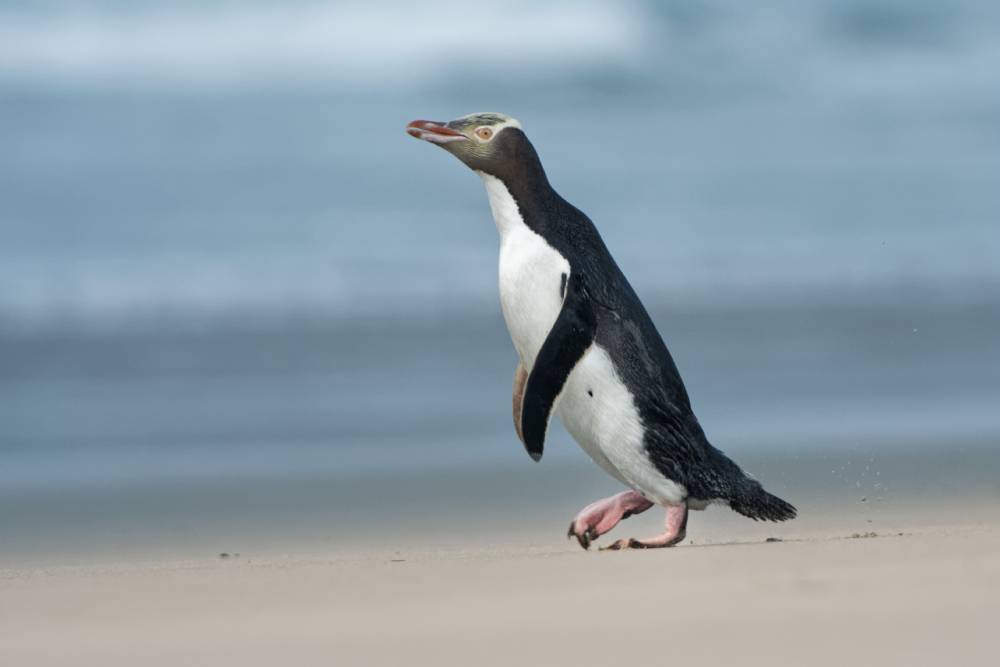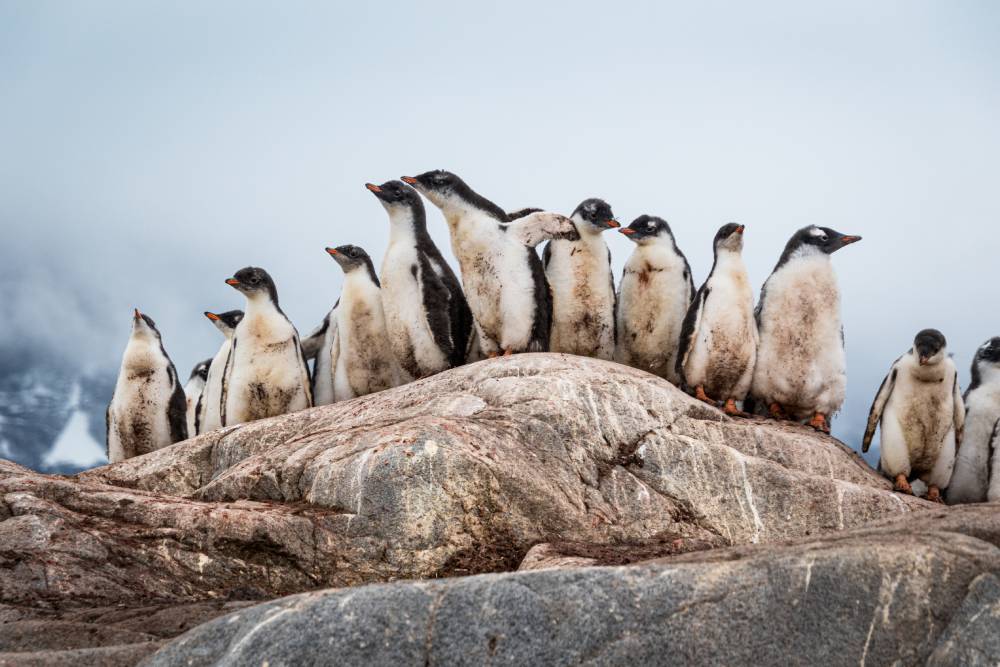Some Show Love for Their Mates with 'Ecstatic Displays', and Other Fun Facts About Penguins
Michelle Milliken
As we get into mid-January, you may feel like the fun, festive holidays are over. You would be forgetting about Penguin Awareness Day, though! That's held on January 20 each year. In honor of the occasion, let's learn some more about these adorable, waddling aquatic birds.
The Number of Species is a Contentious Issue
If you Google the number of penguin species, you’ll get a few different answers. WWF even has the figure listed at between 17 and 19. What’s with the discrepancy? Well, some species have been split into different groups after further study. One example is the rockhopper penguin, which, in 2006, began to be recognized as two different species: the northern and southern rockhopper. There are other species that may soon get the same treatment.
Currently, IUCN and other scientific organizations recognize 18 species: the Adélie penguin, the African penguin, the chinstrap penguin, the emperor penguin, the erect crested penguin, the Fiordland penguin, the Galápagos penguin, the gentoo penguin, the Humboldt penguin, the king penguin, the little blue penguin, the macaroni penguin, the Magellanic penguin, the northern rockhopper penguin, the royal penguin, the Snares penguin, the southern rockhopper penguin, and the yellow eyed penguin.
They’re Impressive in the Water
For birds that spend so much of their lives in the sea – often months at a time - it’s not surprising to learn that they’re well suited for it. Emperor penguins can dive hundreds of meters and hold their breaths for more than 20 minutes, while gentoo penguins can reach swimming speeds of more than 20 miles per hour.
Penguins keep warm under the water thanks to their tightly packed feathers, which keep their bodies dry and help them glide through the water more easily. They can see well underwater, too, thanks to flattened corneas that prevent light from bending when it hits their eyes. A special gland also filters salt out of their bloodstreams, which allows them to drink large amounts of sea water without repercussions.
Parenting is a Two-Bird Job
When it comes to care for the little ones, all flippers are on deck. Mom and dad both provide care for chicks, with both parents incubating eggs, regurgitating food for chicks, protecting their young, and often recognizing the distinctive call of their own chick. One interesting case, though, is the emperor penguin. For that species, the male typically incubates the egg until it’s ready to hatch, while the female heads out to sea to forage. During the whole breeding to hatching process, the male can lose up to 45% of its body weight, living off of body fat reserves to do so.
Some Mate For Life
Species vary on the question of breeding partners, but most are monogamous during breeding season. Some also mate for life. Those include the Magellanic, gentoo, and southern rockhopper penguins. A particularly romantic species, though, is the macaroni penguin, named due to the fact that macaroni once referred to stylish men who wore feathers in their hats; the species is very fashionable with the feathers in their “hats”. This isn’t what woos their partners, though: It’s the dancing they do when they see each other, called an ecstatic display. It involves puffing up their chests, swinging their heads from side to side, and making a noise to go along with it.
One of Their Ancestors Was Huge
Like bison, who have predecessors that were somehow even more massive than they are, penguins also have a very sizable ancestor. The colossus penguin, whose fossils were discovered in 2014 in Antarctica, was nearly seven-feet tall. Those happy feet could cause a mini-earthquake, huh? Scientists estimate that it lived 37 million years ago and weighed around 250 pounds.
They Can Shoot Their Poop
We’ve all been a little concerned when a flock of birds is flying overhead. The falling droppings seem like they’re imminent. Not to alarm you, but this aquatic bird’s poo is even scarier: It’s a projectile. Some penguin species can shoot their poo up to four feet, which is necessary to keep their nest clean when they don’t want to leave it during incubation.
They Play a Key Role in Their Ecosystems
In addition to its impressive aerodynamics, the projectile poo provides benefits. Much like the droppings of bats, penguins’ poo enriches their environment, as it carries nutrients between land and sea. Penguins are also a key part of their food chains. They impact the prey populations of squid, small fish, and krill, while they themselves serve as food to larger predators, like leopard seals, seabirds, and sharks.
They Face Many Threats
Unfortunately, these unique and beneficial animals are under threat, with 11 of the 18 species currently listed as threatened with extinction by the IUCN. Among those listed as endangered on the IUCN Red List are the African, the northern rockhopper, and the Galàpagos penguin. The emperor penguin was also recently listed as threatened under the Endangered Species Act in the United States.
The threats penguins face include climate change-caused ice melt. Ice plays a key role in breeding for many species and gives them a place to rest and avoid predators when foraging. The loss of sea ice has also impacted the population of krill, a main food source for penguins. Their food sources have been impacted by overfishing, as well.
Like many other species, penguins are also being impacted by habitat destruction and invasive predators and diseases.
Would you like to do your part to help penguins thrive? Learn how to help here!









